9. Modern Times (1936)
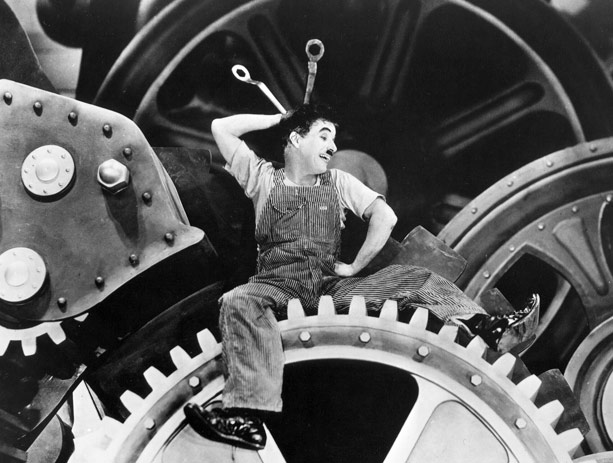
Charles Chaplin was one of the first great film stars and cinematic artists. Coming from the British music hall stage, he took to film instantly upon coming to the U.S in the years just before World War I. Greatly touched with genius, he quickly took control of his own career and not only acted but directed produced, wrote, and, later on, scored all of his films. His famed character of the “Little Tramp”, a gentlemanly wanderer of no financial means, is still one of the best remembered in film history.
It seems odd to encounter him this late in the list but, sadly, his work often had a sentimental streak rooted in his rough Victorian era childhood, which does not always set well with younger generations. Perhaps the best introduction to Chaplin and The Tramp is, ironically, the character’s final appearance.
Though sound had come to film nearly a decade earlier, Chaplin refused to participate and had released 1931’s City Lights (a huge all around hit) and this film as silents. However, this one had a score, sound effects and speech coming out of mechanical devices. The Tramp is a factory worker who goes bonkers due to the monotony of assembly line life but finds trying to be an individual in a cookie cutter age to be a big challenge.
He, and the film, are enormously helped by the kindred soul who joins The Tramp, The Gamine, a feisty young woman played by Chaplin’s appealing real life leading lady Paulette Goddard. She is quite unlike the demure and flowerlike ladies of earlier films and this film has the most robust comedy sense of any Chaplin feature (harking back to his famed short subjects). Modern indeed.
10. Bringing Up Baby (1938)
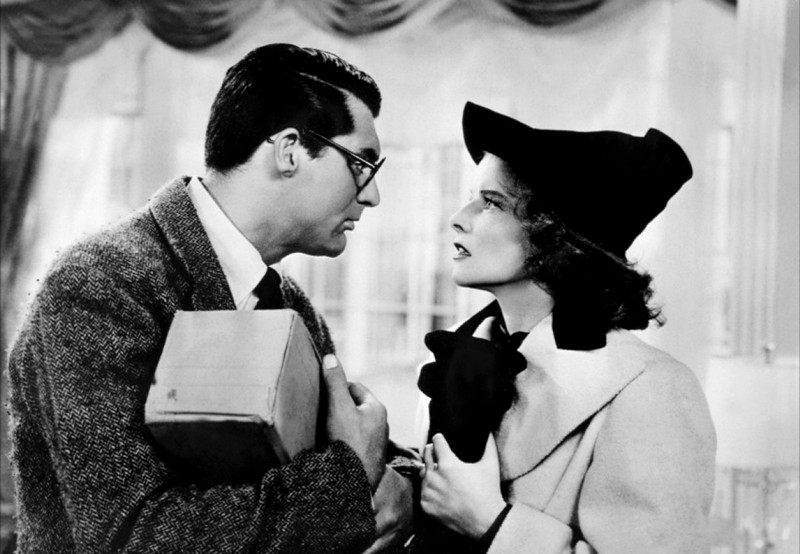
The Great Depression ground on for a long time and after a good stretch, a form called “screwball comedy” came along. In this sub-genre, things out of the ordinary would take place and the decorum of one or more of the lead characters would end up in tatters since society has been turned upside down.
One of the best creators of this form was Howard Hawks, a movie-making jack of all genres, who made great westerns, adventures, war films, musicals (!) and comedies. He believed in speed and movement and action in all of his films. He was sometimes a bit much for the audiences of his day (and this film fall into that category) but his work has aged superbly.
Baby, starring the wonderful team of Cary Grant and Katherine Hepburn showcases the romance of a paleontologist trying to piece together a dinosaur skeleton while an other-worldly socialite-heiress pursues him in an off-handed manner (though he’s to be married the next week to a machine-like woman).
The plot has an imported leopard, a cute cairn terrier with a fondness for old bones, several addled characters and a number of social mishaps, all done at break-neck speed. It was too wild then, about right now.
11. The Wizard of Oz (1939)
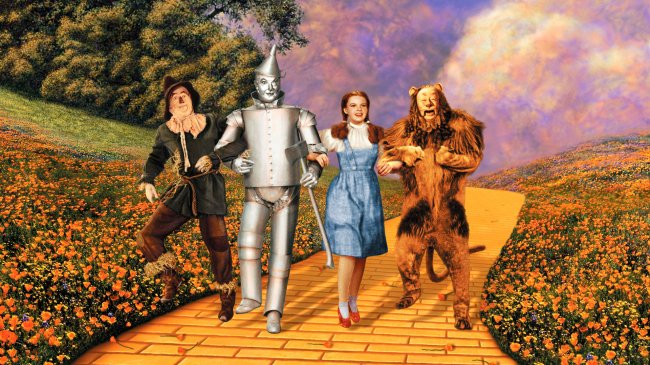
Yes, EVERYONE knows this one. This story of a young girl blown to a magic land and trying to get back home despite the machinations of a wicked witch but with the help of three unlikely companions is one of the most famous films ever made. Yes, it has memorable music, vivid color, terrific sets, costumes and make-up and a stellar supporting cast but it has one truly magical ingredient.
After failing to secure famed child-star Shirley Temple, the producers reluctantly cast Judy Garland as the heroine. This was a lucky break for she is not only superb as a singer but her sincere and emotionally heartfelt performance is what really makes this film work.
The viewer believes in the character and her quest (which some might find misguided) to return to her drab home because Garland makes one believe that the character believes in it. This really is a story many young people can understand as it concerns the journey the young must undertake through life and the hope of how it all will come out in the end.
12. The Maltese Falcon (1941)
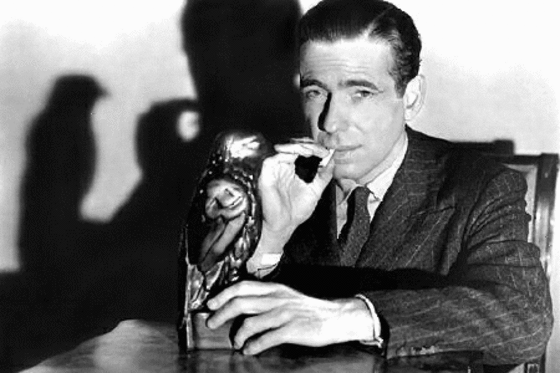
Anyone of a newer generation interested in film inevitably comes across the movement now known as film noir. A term created long after the fact by French film historians, film noir refers to a group of crime thrillers featuring a dark, shadowy look, equally dark and conflicted, if not sinister, characters, and a Greek-tragedy like sense of fate encased in a modern urban setting, often in a criminal milieu.
Film historians relate that this movement was a product of the mid-1940s to the late 50s but some think that the film under discussion was either the first true noir or an important forerunner.
Taken, for the third and by far best, time in cinema history from the novel by Dashiell Hammett (one of the great American crime writers), the story concerns sharp-witted, but none-too-ethical San Francisco private eye Sam Spade (Humphrey Bogart, one of the great tough guy icons) becoming involved in the desperate search for a priceless gold and jewel encrusted artifact (shaped like a falcon) missing since the Middle Ages.
Those drawing him into the search are a colorful lot and quite unscrupulous, especially a lovely but duplicitous woman (Mary Astor), a type standard to film noir. Moving like lighting thanks to writer-director John Huston (his directorial debut), this mystery is loads of fun and also says a thing or two about the price one might pay for going outside of the lines.
13. Citizen Kane (1941)
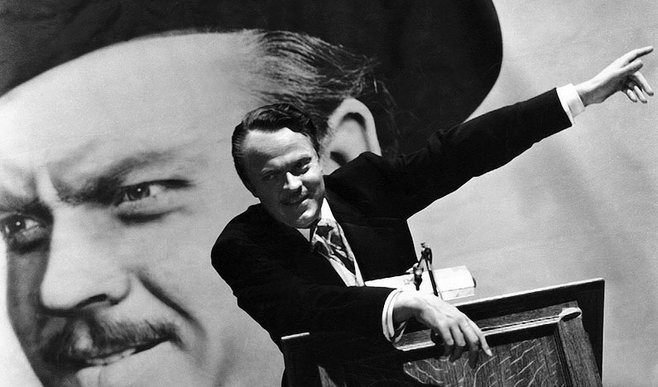
The greatest film of all time? Is there any such thing, really? Despite such hyperbolic billing, Citizen Kane is one of the great moments in film history.
Orson Welles, until then a prominent name on the stage and radio, came to Hollywood at 26 with an amazing contact which allowed him complete freedom to make his debut film. He told the (somewhat fictional) life story of a megalomaniac newspaper tycoon who dominates the lives of those around him, including his vast readership, for better and worse.
The story was interesting but the value was in the innovative way Welles and the renowned cinematographer Gregg Toland told it. Welles had many new ideas of his own and brought back a number from early film history which had fallen out of favor and to which he gave new twists (greatly facilitated by Toland). Though it was not a hit at the time and its influence would take a few years to be felt, film history would never be the same after Kane.
Also, both the story of the film and its creator’s subsequent life might teach the young a valuable, if unhappy, lesson about youthful ambition in the face of time’s relentless rampage. It might also be noted that the U.S. presidential election of 2016 had more than a few echoes of Kane.
14. To Be or Not To Be (1942)
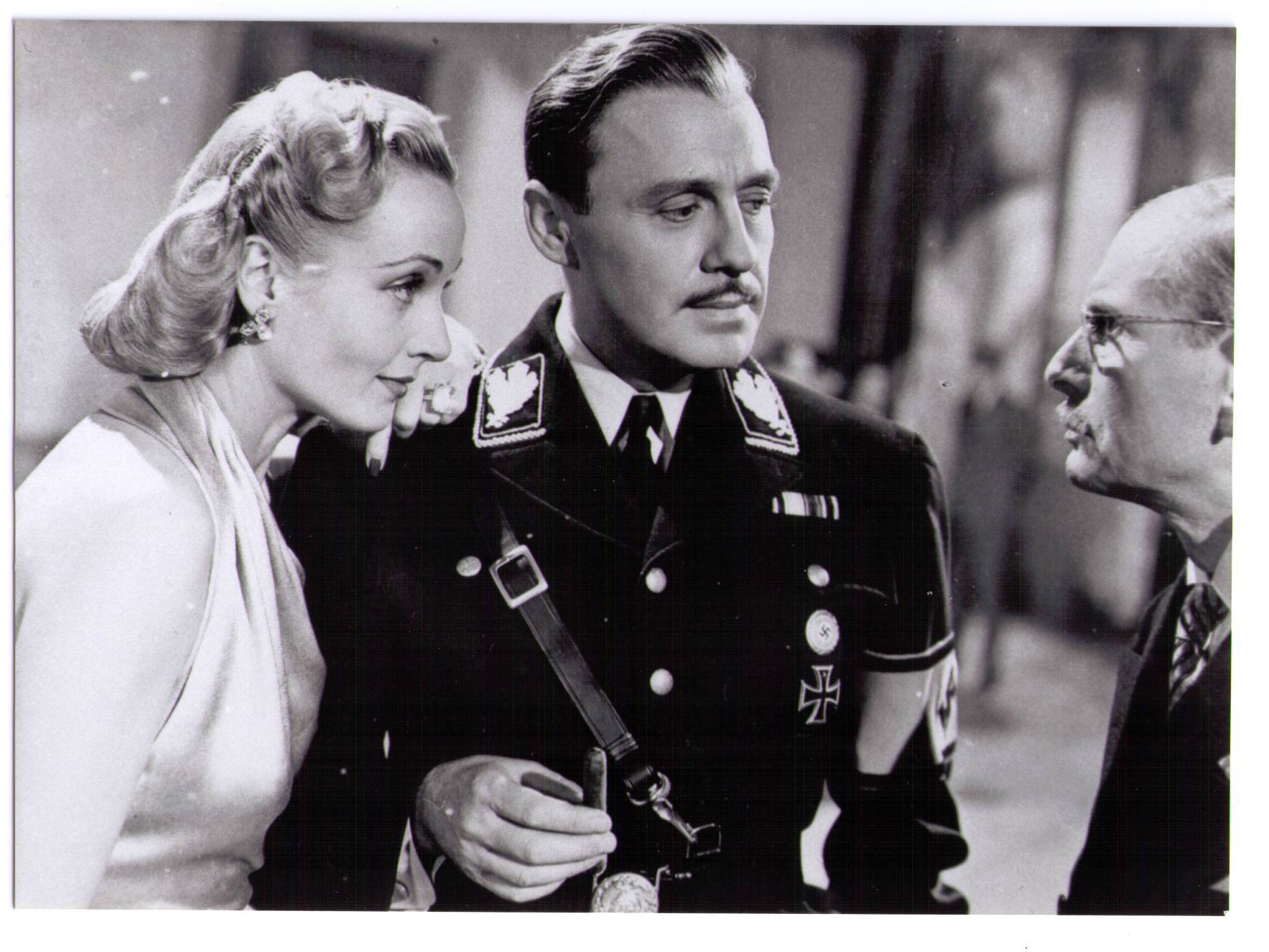
If one had to narrow the momentous events of the 20th Century down to a few and single out one above the others, then the planet altering World War II would surely be that moment.
The movies covered that event all during the war and really, in some measure, comment on it to this day. There are lots of fine combat films, espionage thrillers, home front dramas, and service comedies but one of the best, and a good place to introduce WWII cinema to young viewers, was made right at the start (for the U.S, anyway).
The much acclaimed comedy director Ernst Lubitsch, then nearing the premature end of his life and career, created one of his last masterworks with this story of a hammy Polish stage star (the popular radio comedian Jack Benny), his luminous actress wife (the excellent comic actress Carole Lombard, who died shortly after in a air crash while selling war bonds), the Polish air force office (Robert Stack) with a crush on her, and the various character actors (and just plain characters) who make up the pair’s acting company as all involved get involved in going deep undercover when the Nazis invade Poland (and start WWII).
Though more serious than is often remembered, many at the time found laughs mixing with the horrors of war offensive (especially in the face of the star’s tragic death) and the film was not a hit. However, it looks better and better and more ahead of its time than ever.
15. Meet Me in St. Louis (1945)
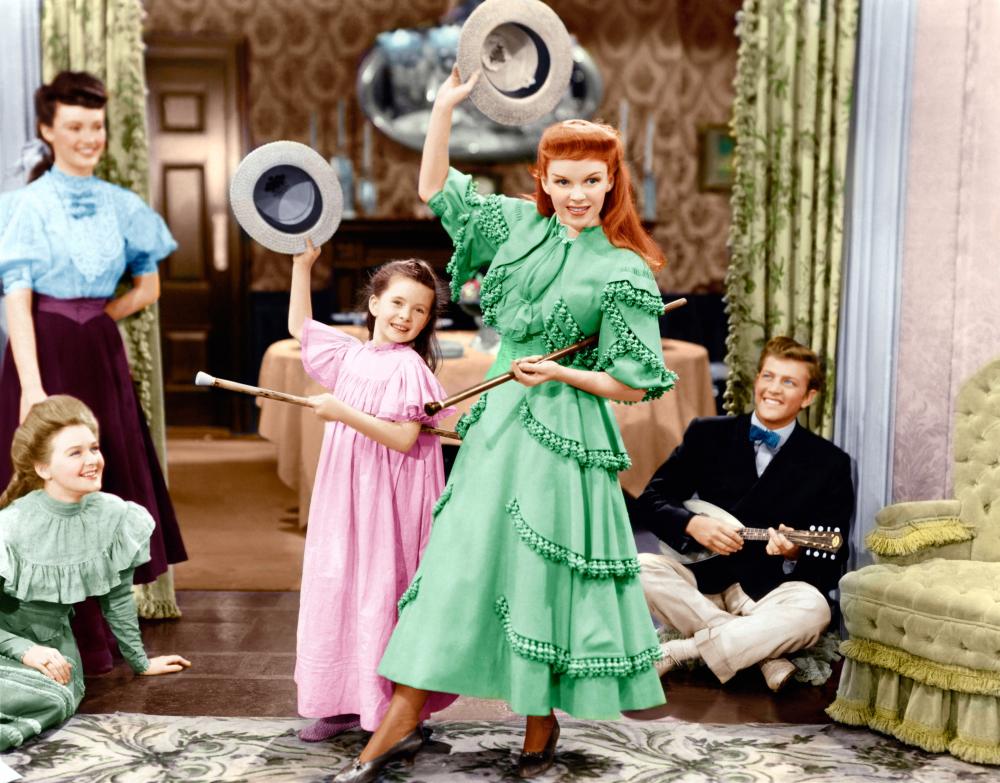
Musicals have not been in favor as such really since the late 40s (though some of the best were made in the 50s). They are a tough sell to younger viewers but the more recent success of Chicago, the Broadway-esque Disney animated musicals and the youth oriented High School Musical films show there is still life there somewhere.
A great introduction might well be Meet Me in St. Louis, which actually might be termed a light but heartfelt family themed comedy-drama with songs. Taken from stories by author Sally Benson, the film follows about half a year (late 1904) in the lives of a St. Louis family, who might have to move to New York before the big World’s Fair opens. While that event lurks in the background the large family unit finds love and adventure.
Like The Wizard of Oz, this superb film features the best the first-rate famed MGM musical unit had to offer, including Garland again at her best. However, the secret ingredient here is little Margaret O’Brien as the somewhat mischievous but adorable youngest daughter, who obliterates the superb Christmas sequence (with the now classic carol, Have Yourself A Merry Little Christmas) with her unforgettable Halloween excursion.
16. The Treasure of the Sierra Madre (1948)
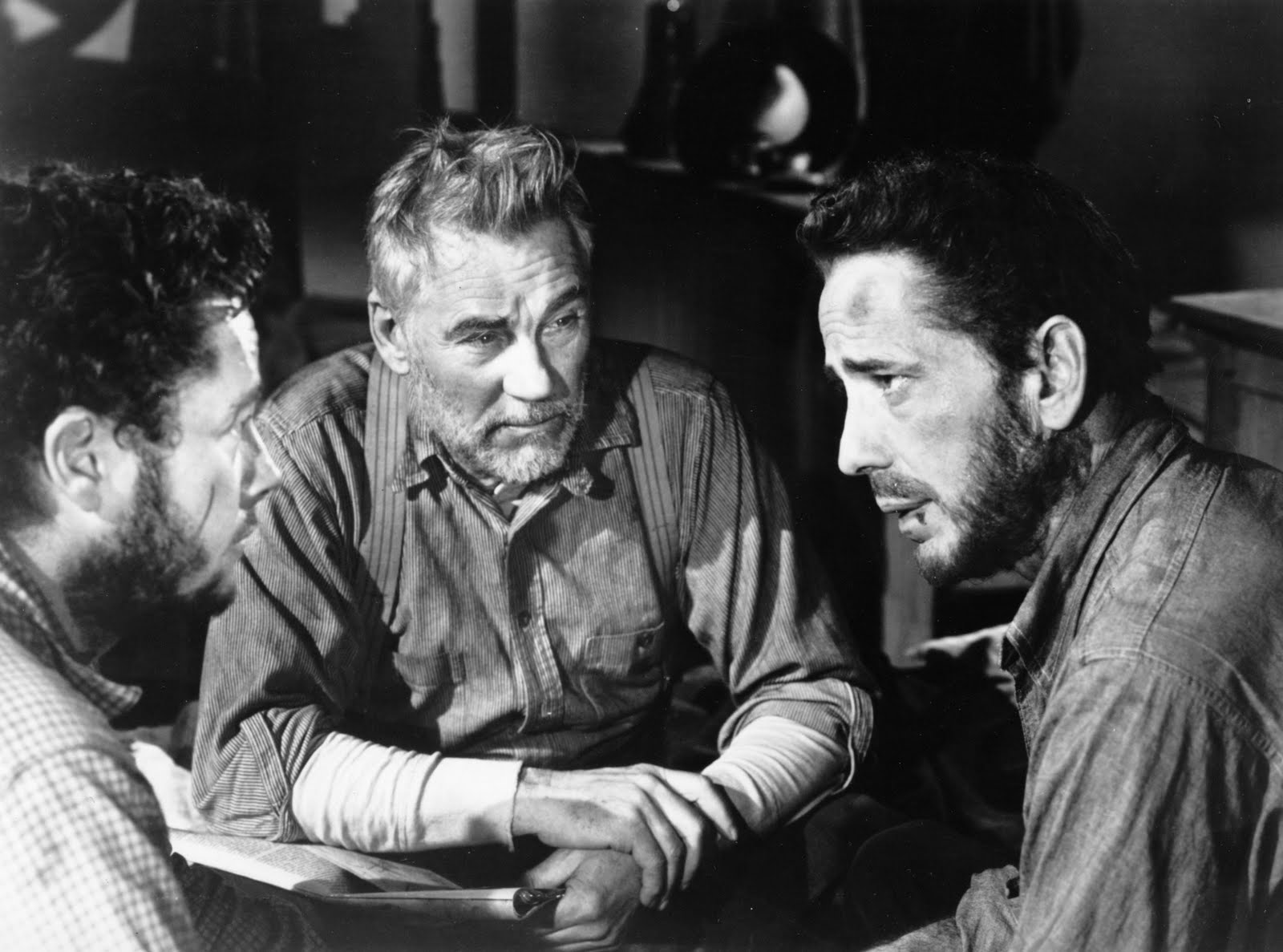
At the opposite end of the 1940s, John Huston and Humphrey Bogart reunited again (they made several films together)for another, even more profound look at greed and its human consequences.
Starting from an acclaimed novel by the ultra-mysterious author B. Traven, The Treasure of the Sierra Madre, set in early 20th century Mexico tells how three rather luckless Americans (Bogart, western star Tim Holt and Huston’s father, the great actor Walter Huston) stumble onto a rare piece of good luck which enables them to go and seek out a fortune in gold the oldest member insists is encased in the earth of a distant, isolated part of the country.
The group gets there and finds the gold after several hard knocks but finds that getting it back to civilization, especially in the face of a justifiable lack of trust in one another is a different matter altogether.
Made for very little money but great skill, the critics raved but the public found it too downbeat. However, time once again has shown a film’s profound awesomeness.
17. Singin’ in the Rain (1952)
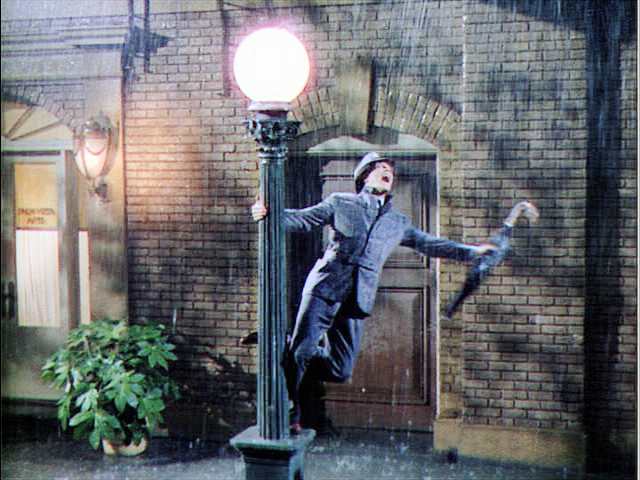
Much as with Citizen Kane, the absolutists insist that Singin’ in the Rain is the best musical ever. This time….well, they may have a point. This was a creation of MGM studios legendary Freed unit, headed by songwriter turned producer Arthur Freed, to very many the greatest musical producer in film history.
Set during the time talkies ended the silent era, the film features many of the great songs Freed wrote during the actual period and has a wonderful and funny script courtesy of the renowned songwriting-scripting team of Betty Comden and Adolph Green.
The superlative dancing in the film comes by way of the great Gene Kelly, who stars, co-directed with the expert Stanley Donen, and choreographed, showcasing his athletic dance style which looks so modern, especially when he dances with the divine Cyd Charisse.
A young Debbie Reynolds and the excellent comic dancer Donald O’Connor lend fine support but the acting honors go to Jean Hagen’s unforgettable comic performance as Lina Lamont, a big-ego silent star with a squeaky little voice.